2015 Recap: The Most Popular Parse.ly Posts
Catching up on some reading this week? We took a look back at the Parse.ly blog in 2015 to see which stories were most read by our audience. Don’t miss any stories in 2016 – subscribe to the blog to get the stories sent directly to you!
1. This is How Long Articles Last Online
As part of our Authority Report series, this past spring we looked at articles across our network of digital publishers to determine how long articles typically attracted readers for. The findings showed that, on average, articles brought in most of their readers (90%) in the first 2.6 days.
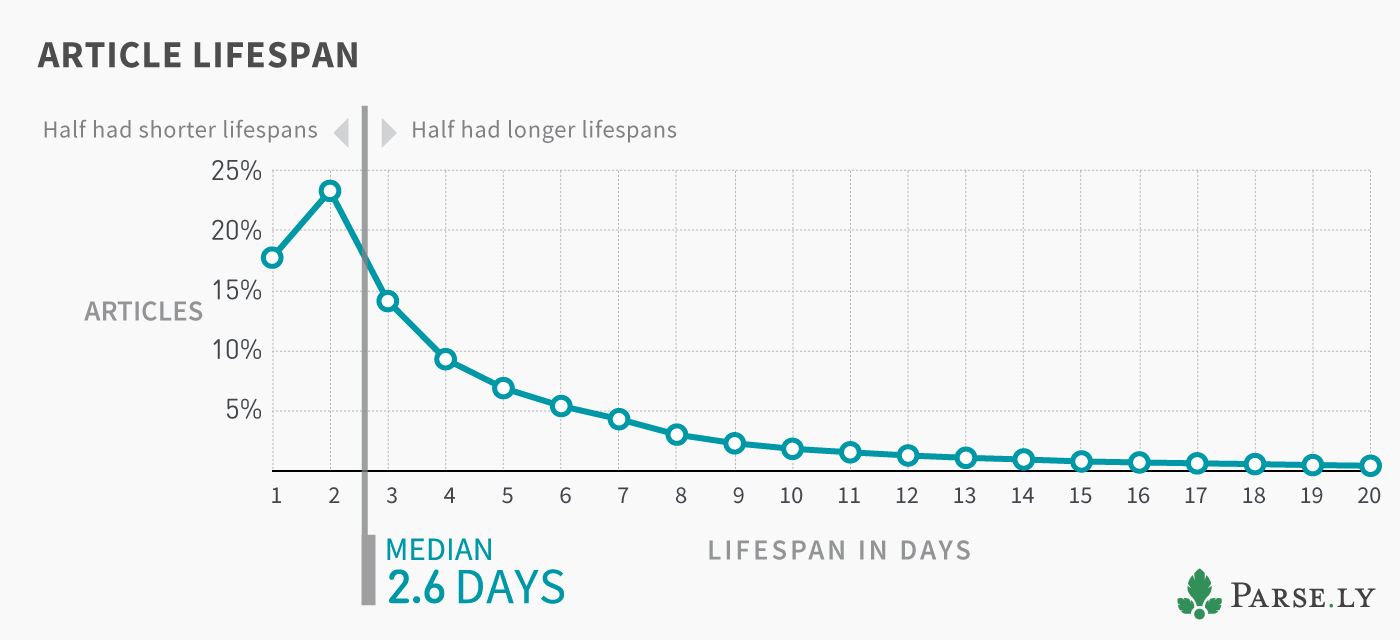
However, we also discovered that there was a significant long-tail of traffic that contributed to evergreen articles. We also dug into how social media affected the average. It turns out that good pickup on social media, particularly on Facebook, correlated with longer article lifespans.
2) Measuring the Impact of “The John Oliver Effect”
After noticing a lot of coverage of John Oliver’s HBO series “Last Week Tonight” across our publishers, our data team wondered what kind of impact Oliver was actually making on the topics he covered, if any.
Overall, we found that John Oliver’s influence is notable for relatively unknown issues (like “chicken farmers” for instance) and a bit more muted for bigger issues like same-sex marriage.
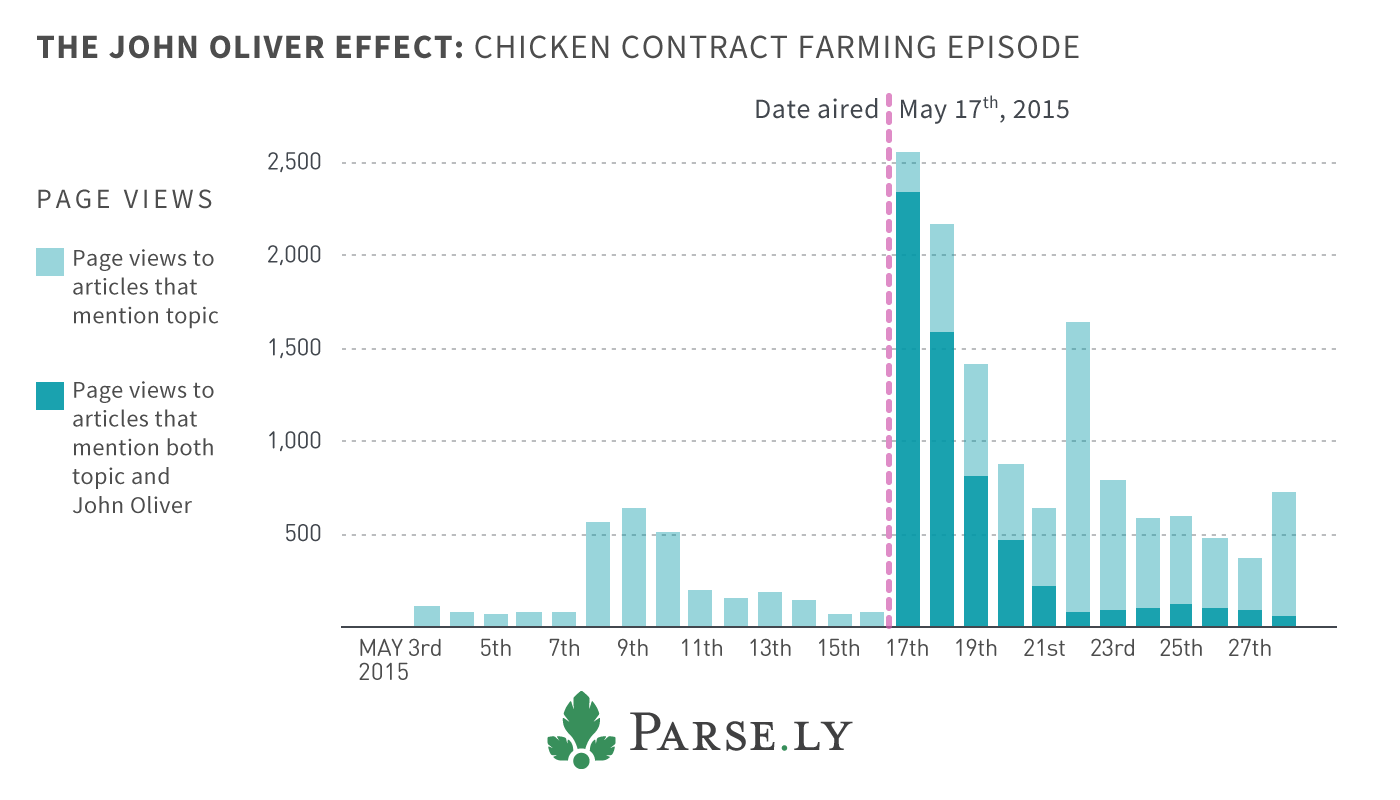
We also compared Oliver’s impact on the coverage of topics to that of another popular news program: 60 Minutes. With topics covered by 60 Minutes, for identical air dates, we found almost no articles being read that specifically referenced the topic and the show.
Oliver was just named The Crime Report’s “Person of the Year” for the significant impact he has had on the U.S. criminal justice system during 2015.
3) Making the Dashboard: UI/UX Decisions for Turning Audience Data into Insights
This year our engineering team made major changes to the Parse.ly dashboard, including new metrics, combining real-time dashboards with historical data, and making full-screen and big-board screens customizable.
One of our UX leads, Toms Baugis, talked about some of the decisions that went into the new dashboard in this post, which was the third most read of the year.
4) Survey Says: Monetization Will Be Digital Media’s Biggest Challenge in 2016
Hundreds of digital media professionals took our survey about the challenges of 2015 and the expectations of 2016.
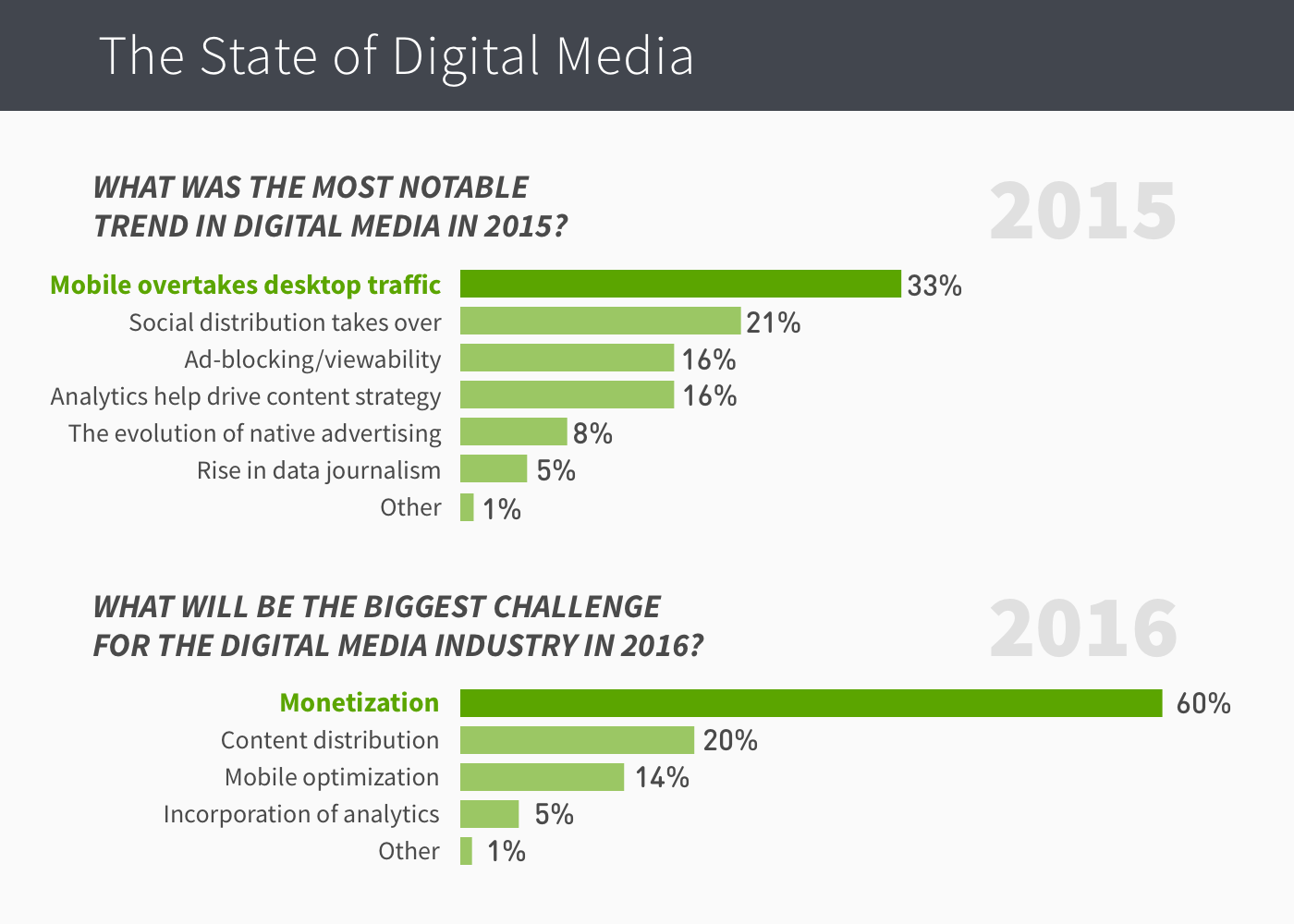
While the shift of audiences to mobile devices took the top spot for the biggest trend of 2015, our survey respondents identified one main challenge for 2016: monetization. How will digital media make money, especially when competing with Facebook, Google, and others for readers time and attention?
5) Facebook Dominates Referral Traffic: A Coverage Overview
Arguably the biggest trend we uncovered this year was when we announced that Facebook had surpassed Google as the number one source of traffic to the Parse.ly network of 400 + news, media and content sites.
The media reacted by exploring what it all meant for the industry. Parse.ly CTO Andrew Montalenti pointed out in SearchEngineWatch that news would now find readers through social media, rather than readers searching out news. Other industry coverage explored how Facebook’s Instant Articles would affect these numbers, and what strategies publishers should adopt in response to this finding.
Our update in November showed that Facebook continues its upward trend in terms of traffic to news and media websites.
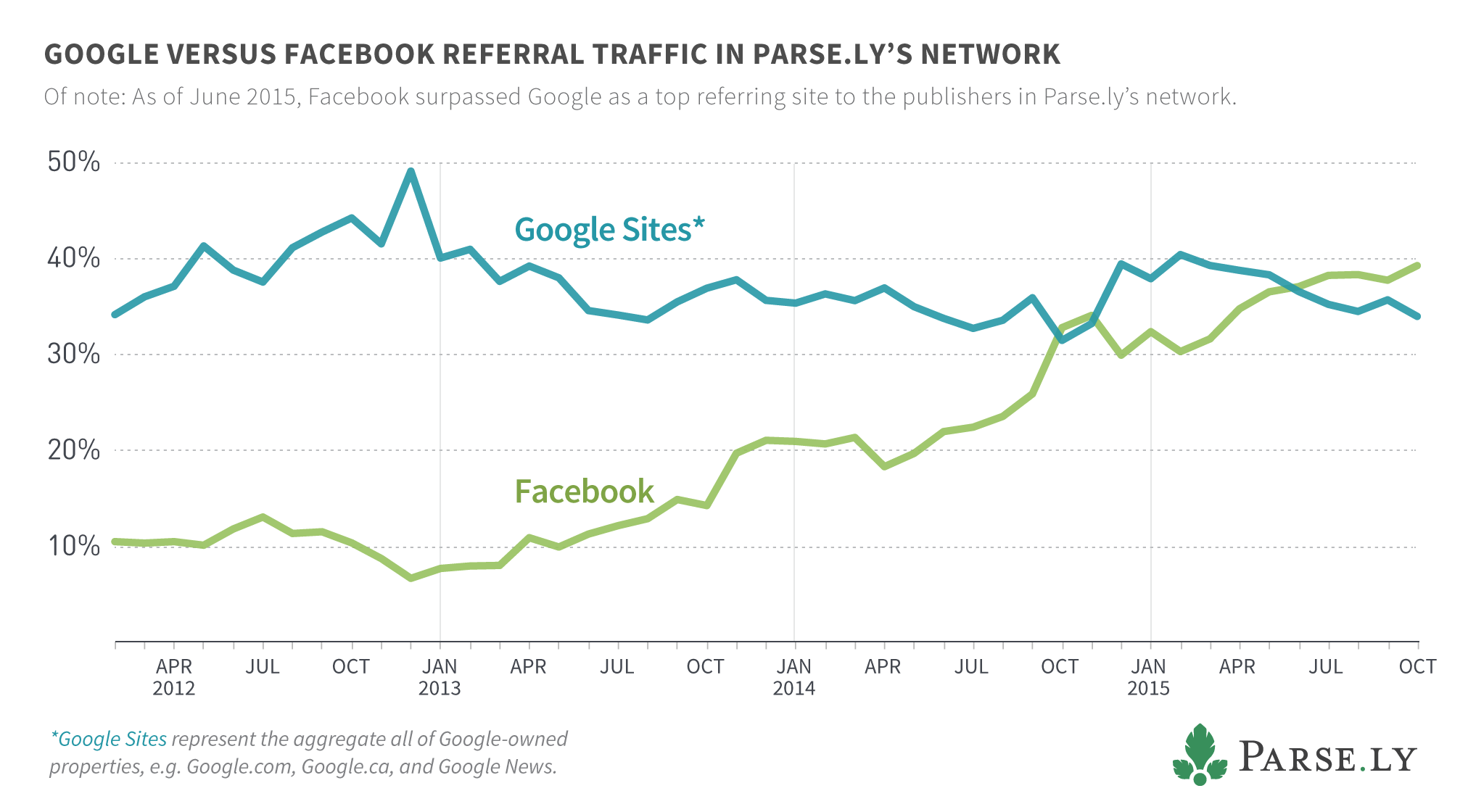
6.) Here’s the Secret Sauce to Audience Development
Guest blogger and current sports analyst at Vocative, Jeff Andrews, broke down one approach to a growing role at digital publishers: audience development. The post highlights how audience development editors and analysts can think about their role through:
- Advanced audience segmentation
- Understanding the motivations of those segments
- Targeting each segment with content that meets their needs in an unfulfilled way
The post was part of a series that took our Editor’s Guide to Digital Media a step further, by exploring strategies that combined analytics, business practices and editorial needs. It’s a must read for anyone tasked with audience development in 2016.
7.) Headline Testing in Parse.ly: Now Available!
One of our most popular announcements of 2015 was our integration announcement with Optimizely. The partnership allows clients of Parse.ly and Optimizely to use our editor friendly dashboard to quickly A/B test headlines and see the results alongside the other metrics that Parse.ly tracks.

8.) Did Facebook Fix Their “Dark Social” Problem?
Thanks to many sharp eyed editors and data analysts in the industry, it was discovered that Facebook’s app was not attributing visitors to Facebook traffic sources, but rather grouping them under “Direct Traffic.”
The Facebook team worked to fix this, and asked us to check that the results were as expected. Dark Social today isn’t a problem that publishers have to face any longer!
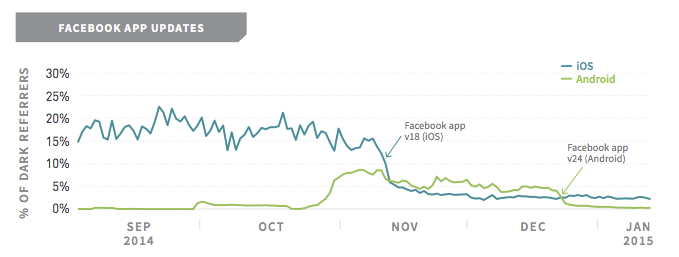
9) The Changelog: Views, Visitors, Engaged Time & Shares in Context
With all of the new metrics available in the Parse.ly dashboard, like new and returning visitors, engaged time, and more, CTO Andrew Montalenti took to the blog to talk about how these metrics can tell a story about readers by giving more context.
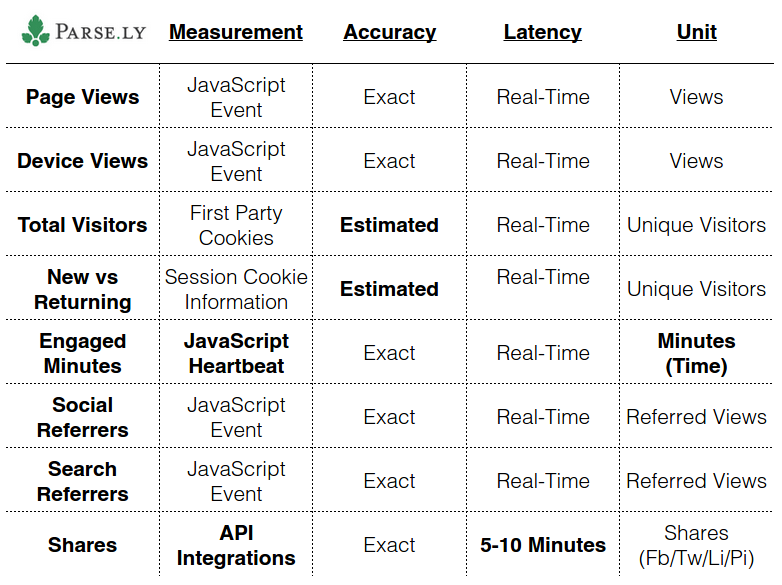
Interested in using your metrics in new ways in 2016? Make sure to check out his post for some ideas!
10) The Big Picture: A Whole New Way to Understand Digital Media Audiences
Parse.ly’s CEO, Sachin Kamdar wrote at the beginning of 2015, “If anything, the most recent surge of interest in analytics has pointed out how hard getting this right really is.”
The sentiment still holds. We’re going into 2016 with more metrics, customers and Parse.ly employees than ever before, ready to take the challenge on of getting analytics right through our dashboard, our service and our research.
Have any blog posts or topics you want us to explore in 2016? Let us know!
Don’t miss any stories in 2016 – subscribe to the blog to get the stories sent directly to you!